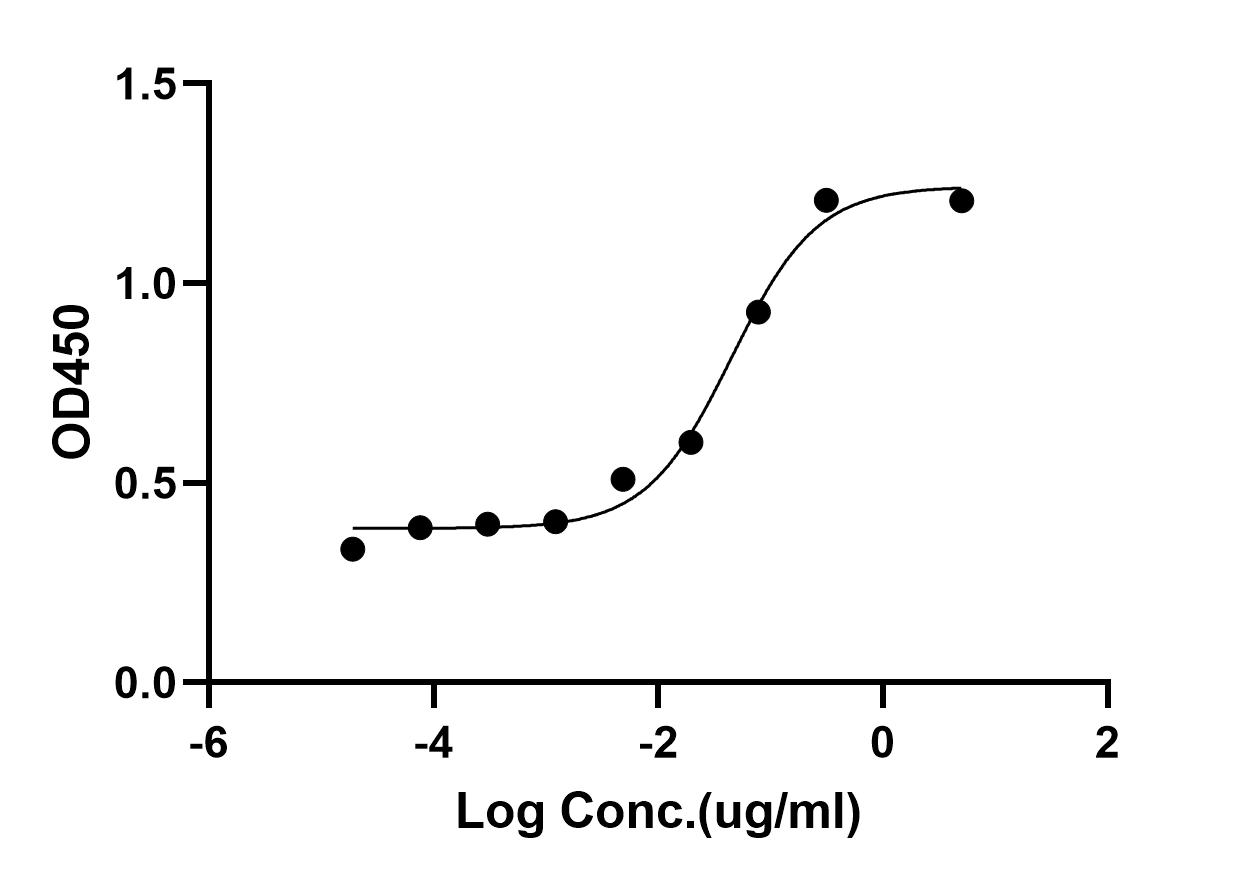CD96 (PN0238) Nb-FC recombinant antibody
- Catalog No.:YA0576
- Applications:ELISA
- Reactivity:Human
- Target:
- CD96
- Gene Name:
- CD96
- Protein Name:
- T-cell surface protein tactile (Cell surface antigen CD96) (T cell-activated increased late expression protein) (CD antigen CD96)
- Human Gene Id:
- 10225
- Human Swiss Prot No:
- P40200
- Immunogen:
- Purified recombinant Human CD96
- Specificity:
- This recombinant monoclonal antibody can detects endogenous levels of CD96 protein.
- Formulation:
- Phosphate-buffered solution
- Source:
- Camel, chimeric fusion of Nanobody (VHH) and mouse IgG1 Fc domain , recombinantly produced from 293F cell
- Dilution:
- ELISA 1:5000-100000
- Purification:
- Recombinant Expression and Affinity purified
- Concentration:
- Please check the information on the tube
- Storage Stability:
- -15°C to -25°C/1 year(Avoid freeze / thaw cycles)
- Other Name:
- CD96;T-cell surface protein tactile;Cell surface antigen CD96;T cell-activated increased late expression protein;CD96;CD96 nanobody;
- Background:
- The protein encoded byThis gene belongs to the immunoglobulin superfamily. It is a type I membrane protein. The protein may play a role in the adhesive interactions of activated T and NK cells during the late phase of the immune response. It may also function in antigen presentation. Alternative splicing generates multiple transcript variants encoding distinct isoforms. [provided by RefSeq, Jan 2016]
- Function:
- developmental stage:Expressed at low levels on peripheral T-cells and is strongly up-regulated after activation, peaking 6 to 9 days after the activating stimulus.,disease:A chromosomal aberration involving CD96 is associated with C syndrome [MIM:211750]. Translocation t(3;18)(q13.13;q12.1). CD96 gene was located at the 3q13.13 breakpoint. Precise structural analysis around the breakpoint showed that the gene was disrupted by the translocation in exon 5, probably leading to premature termination or loss of expression of CD96 protein. No gene was detected at the chromosome 18 breakpoint.,disease:Defects in CD96 are a cause of C syndrome [MIM:211750]; also called Opitz trigonocephaly syndrome. This syndrome is characterized by trigonocephaly and associated anomalies, such as unusual facies, wide alveolar ridges, multiple buccal frenula, limb defects, visceral anomalies, redundant skin, psy
- Subcellular Location:
- Membrane; Single-pass type I membrane protein.
- Expression:
- Expressed on normal T-cell lines and clones, and some transformed T-cells, but no other cultured cell lines tested. It is expressed at very low levels on activated B-cells.
- June 19-2018
- WESTERN IMMUNOBLOTTING PROTOCOL
- June 19-2018
- IMMUNOHISTOCHEMISTRY-PARAFFIN PROTOCOL
- June 19-2018
- IMMUNOFLUORESCENCE PROTOCOL
- September 08-2020
- FLOW-CYTOMEYRT-PROTOCOL
- May 20-2022
- Cell-Based ELISA│解您多样本WB检测之困扰
- July 13-2018
- CELL-BASED-ELISA-PROTOCOL-FOR-ACETYL-PROTEIN
- July 13-2018
- CELL-BASED-ELISA-PROTOCOL-FOR-PHOSPHO-PROTEIN
- July 13-2018
- Antibody-FAQs
- Products Images

